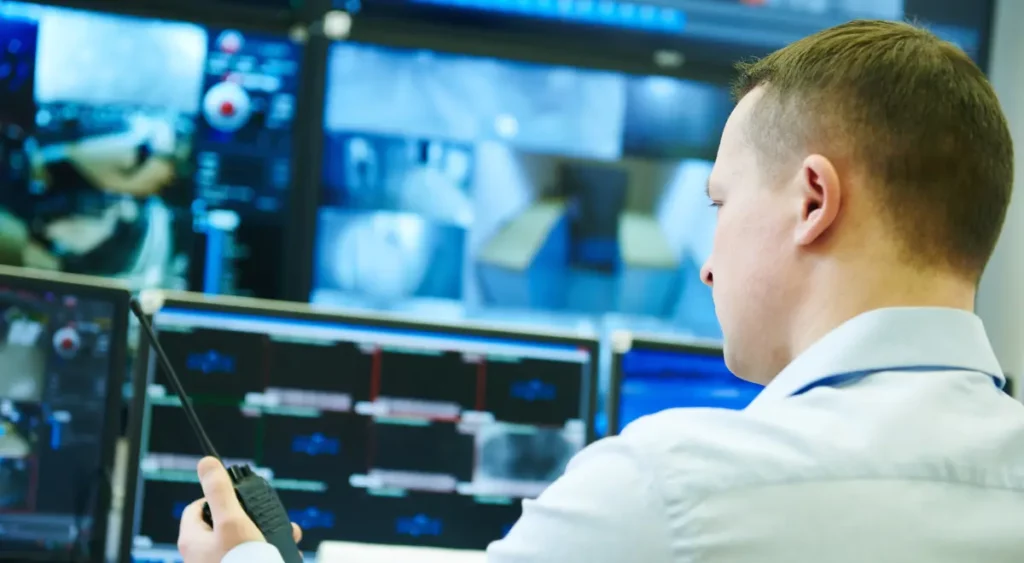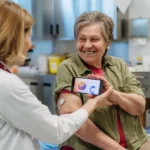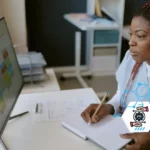Remote Patient Monitoring (RPM) for Managing Sleep Disorders

Are you planning to use remote monitoring software to manage patients with sleep disorders? If so, please read on. Sleep disorders, such as sleep apnea, insomnia, and restless leg syndrome can have a significant impact on a person’s overall health and well-being.
Remote Patient Monitoring (RPM) has emerged as a revolutionizing technology playing a crucial role in the diagnosis and management of sleep disorders, among chronically ill patients. It allows healthcare providers to track sleep patterns and insomnia symptoms outside of a traditional clinical setting.
In this blog, we will explore the benefits of RPM in monitoring sleep disorders and how it can lead to improved sleep quality and care delivery.
Table of Contents
ToggleMonitoring Quality Sleep Patterns with RPM
Remote patient monitoring devices, such as wearable sensors and cellular devices, allow patients to track their sleep patterns, such as how many hours did they sleep, how deep the sleep was, and more in near real time. They do so by monitoring patients’ blood oxygen levels, heart rate, or heart rate variability
By analyzing the data collected from connected RPM devices, healthcare providers can identify abnormalities in a patient’s normal sleep patterns and make the right interventions in the treatment plan.
Benefits of Utilizing RPM in Managing Sleep Disorders
- Early Detection of Sleeping Problems: RPM allows for the early detection of sleep disorders before they deteriorate by tracking any abnormal ups and downs in vital signs. This leads to a more effective treatment and improved outcomes for patients.
- Personalized Treatment Plans: By tracking sleep patterns and quality of sleep, healthcare providers can personalize treatment plans and make necessary inventions, resulting in better patient outcomes and improved sleep quality.
- Improved Patient Engagement: RPM devices allow patients to take an active role in managing their sleep disorders by tracking their sleep patterns via a wearable device and communicating with their healthcare provider in real time.
- Remote Sleep Quality Monitoring: When it comes to monitoring and managing sleep disorders, utilizing an RPM platform reduces the need for in-person visits and allows frequent monitoring of a patient’s sleep pattern progress.
How Can HealthArc Help You Manage Sleep Disorders?
HealthArc is a leading advanced care management platform that provides reliable remote patient monitoring services to help healthcare providers in effective management of sleep disorders in their patients.
Our RPM platform allows healthcare providers in tracking patients’ sleep patterns and quality of sleep, resulting in more accurate diagnoses for sleep disorders and personalized treatment plans.
Not only this, we have a suite of easy to use cellular medical devices, such as heart rate monitor, pulse oximeter, and wearable devices that help in seamless tracking of sleep patterns. Our HIPAA compliant platform and SOC 2 security ensures both patient and provider communication remains secure.
Request a free demo or feel free to talk to our team at +201 885 5571 to learn how we can help you manage your patient’s sleep disorders with RPM.
Frequently Asked Questions (FAQs)
RPM can help with insomnia, sleep apnea, and restless leg syndrome by keeping track of things like sleep patterns, oxygen levels, heart rate, and how deep you sleep.
RPM platforms use wearable sensors or cellular medical devices to gather information about how long and how well you sleep (light vs. deep sleep), your heart rate variability, and your blood oxygen levels. Providers look at this data to find anything that seems off.
- Early detection of abnormal sleep patterns
- Personalized treatment plans
- Improved patient engagement in their care
- Fewer in-person visits and better continuous monitoring
HealthArc has wearable or cellular devices that are easy to use, keep an eye on you all the time, and send data in a way that is HIPAA-compliant. Providers can use real-world sleep data to make treatment plans more specific, find problems earlier, and change care from a distance.
Yes. HealthArc protects and keeps private patient data, like sleep metrics, by using systems that follow HIPAA rules, SOC-2 security, and secure communication channels.
For sleep problems, keeping an eye on things often (like every night or every few weeks) can help you see patterns. Providers can then change the care if they see that sleep quality or respiratory data keeps getting worse.
Yes. Providers can see trends, change treatments (like using CPAP or improving sleep hygiene), and respond when metrics get worse if they track them regularly. Patients often say that over time they sleep better, wake up less often, and are more productive during the day.
PCM (Principal Care Management): For people with one serious chronic condition that puts them at high risk. CCM, or Chronic Care Management, is for people who have two or more long-term health problems. If the patient doesn’t meet the requirements for CCM, PCM is billed.
HealthArc and other RPM platforms follow HIPAA and SOC-2 rules. Only authorized providers can see and share the data, which is encrypted and sent securely. Before their data is used, patients must agree to it.
Not always. There are technical and operational problems (like setting up devices, training, and integrating workflows), but many platforms (like HealthArc) are made to make implementation easier by using plug-and-play devices, dashboards, and support for providers.
No. RPM adds to human care by automating routine monitoring and alerts, but human doctors and nurses are still needed to make sense of the data, make decisions, and supply personalized care.
- Sleep metrics (duration, depth, interruptions)
- Blood oxygen levels (SpO₂)
- Heart rate & heart rate variability
- Weight, glucose (if applicable)
- Activity levels & other vitals
Yes. HealthArc works with a lot of EHRs through standard interoperability protocols like HL7 and FHIR. This makes sure that data flows smoothly into clinicians’ work.
Yes. To protect patient data, the platform is HIPAA-compliant, SOC-2 certified, uses encrypted channels to send information, and limits access based on roles.
RPM is covered by Medicare, many state Medicaid programs, and an increasing number of private insurers. Reimbursement depends on using valid CPT codes and meeting documentation and service requirements.
Yes. As long as the time spent on each service is recorded separately and the criteria for both services are met, providers can bill for both RPM and CCM at the same time.
Under supervision, clinical staff (nurses, care coordinators) often handle daily monitoring and alerts. According to payer rules, only qualified providers (like doctors, nurse practitioners, and physician assistants) can bill.
Most Recent Blogs
Categories
Related Blog
- October 23, 2025 | Read Time: 12 mins
How RPM Devices Improve Hypertension and Diabetes Outcomes in Medicare Populations
Remote patient monitoring (RPM) is transforming chronic care for Medicare beneficiaries. CMS...
Learn More- August 25, 2025 | Read Time: 13 mins
How Can “One Big Beautiful Bill” Boost RPM Programs by $50B?
The “One Big Beautiful Bill,” signed July 4, 2025, directs $50B over...
Learn More- August 22, 2025 | Read Time: 17 mins
HealthArc Platform vs RPM Software Solutions
Is your healthcare organization trying to pick a remote patient monitoring solution?...
Learn More


